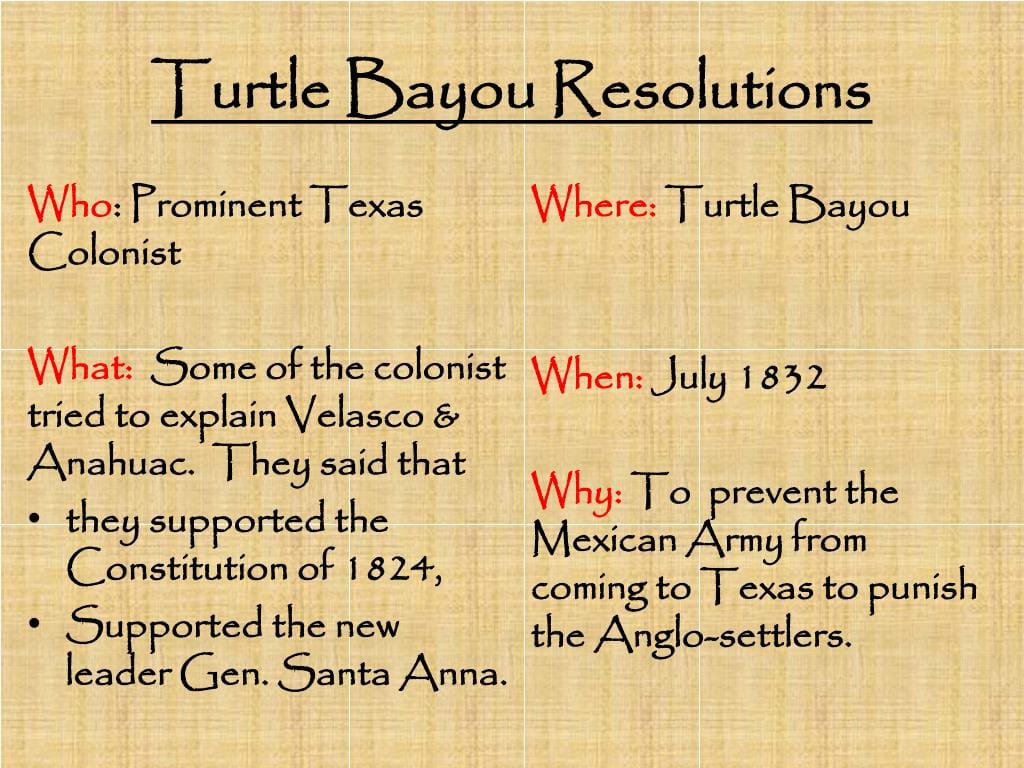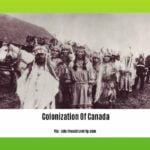The year was 1832. Texas, a land of promise and opportunity, was also a land of simmering unrest. The Turtle Bayou Resolutions emerged from this crucible, not as a clarion call for independence, but as a carefully calculated plea for fairness and autonomy within the framework of the Mexican nation. This seemingly modest declaration, however, would prove to be a pivotal turning point, a spark that would ultimately ignite the Texas Revolution.
The Genesis of Discontent: Anahuac and the Road to Turtle Bayou
Explore the history of the indigenous people on Turtle Bayou, which was often shaped by the influence of ténus and the spread of universalizing religion. In the early 1830s, Texas was a melting pot of cultures and ambitions, a frontier where Anglo-American settlers, accustomed to a degree of self-governance, clashed with the centralist policies emanating from Mexico City. The Anahuac Disturbances of 1832, a series of confrontations between settlers and Mexican authorities at the port of Anahuac, became a flashpoint for these growing tensions. Disputes over tariffs, the issue of escaped slaves seeking refuge in Texas, and the heavy-handed enforcement of Mexican law by Commander John Davis Bradburn all contributed to the escalating conflict. These localized skirmishes reflected a broader struggle between the principles of federalism, enshrined in the Mexican Constitution of 1824, and the increasingly centralist policies of President Anastasio Bustamante.
A Calculated Gambit: The Turtle Bayou Resolutions
Retreating from Anahuac, Texan settlers gathered at Turtle Bayou, a small community near present-day Anahuac. There, they drafted a set of resolutions that would become a cornerstone of Texas history. These resolutions condemned Bustamante’s centralist policies and professed loyalty to Antonio López de Santa Anna, a charismatic general who was then championing federalism within Mexico. This declaration of support for Santa Anna was a shrewd political maneuver, allowing the Texans to frame their resistance not as rebellion against Mexico, but as support for a prominent figure within the existing political structure.
Importantly, the initial draft of the resolutions likely lacked signatures, suggesting a degree of caution and a desire to gauge the potential repercussions of their actions. Later, a consolidated version was presented to Colonel José Antonio Mexía, a Mexican officer sympathetic to the Federalist cause. This version, signed by seven prominent Texans, including John Austin and Wyly Martin, ultimately persuaded Mexía to withdraw his troops from Anahuac. This small victory proved crucial, validating the Texans’ strategy and emboldening them for future action.
Amplifying the Message: Publication and Public Opinion
The Turtle Bayou Resolutions, published in the Brazoria Constitutional Advocate on July 23, 1832, quickly became a powerful tool of public persuasion. The newspaper’s dissemination of the resolutions helped to solidify Texan support for Federalism and clearly articulated the colonists’ grievances against the centralist government. The publication also played a significant role in shaping Mexican perceptions of the conflict, framing the Texans’ actions as part of a broader internal struggle rather than a separatist movement. It is likely that some within the Mexican government sympathized with the settlers’ grievances, which helps explain José Antonio Mexía’s acceptance of the resolutions and his decision to de-escalate the Anahuac situation by withdrawing his troops.
The Echo of Turtle Bayou: A Stepping Stone to Revolution
While the Turtle Bayou Resolutions successfully diffused the immediate crisis at Anahuac, they also represented a critical step toward the Texas Revolution. Some historians suggest that the resolutions were merely a delaying tactic, a temporary fix for deeper underlying issues. However, the resolutions undoubtedly played a pivotal role in unifying Texan sentiment, articulating a shared vision for a more autonomous Texas within a federalist Mexico.
The resolutions’ affirmation of Federalist principles and condemnation of centralist rule provided a framework for future resistance. This public declaration of principles, combined with the successful negotiation with Colonel Mexía, emboldened the Texan colonists and contributed to the growing momentum towards eventual independence. Though not a declaration of independence in themselves, the Turtle Bayou Resolutions laid the groundwork for the revolution that would follow.
The Two Pillars of Turtle Bayou: Federalism and the Rejection of Centralism
The Turtle Bayou Resolutions hinged on two core principles: an unwavering support for federalism and a staunch rejection of centralism. These principles, though seemingly straightforward, represented fundamentally different visions for the future of Texas.
Embracing Federalism: The Mexican Constitution of 1824, which established a federalist system of government, resonated deeply with Texan settlers. Federalism offered a degree of local autonomy and protection against the perceived tyranny of a distant, centralized government. The Texans’ support for Santa Anna stemmed from his perceived advocacy for federalist principles, viewing him as a potential ally in their struggle against Bustamante’s centralist regime.
Rejecting Centralism: The centralist policies of President Bustamante, which concentrated power in Mexico City, were viewed by Texans as oppressive and antithetical to their desire for self-governance. Bustamante’s policies, including increased tariffs, stricter control over immigration, and the deployment of military forces, fueled resentment and a sense of disenfranchisement among the Texan colonists. The resolutions served as a direct rebuke of these policies and a powerful assertion of the settlers’ desire for greater control over their own affairs.
These twin pillars of the Turtle Bayou Resolutions—the embrace of federalism and the rejection of centralism—laid the ideological foundation for the Texas Revolution. They became rallying points, uniting diverse groups of settlers under a shared vision for the future of Texas.
The Unfolding Narrative: From Turtle Bayou to Independence
The events at Turtle Bayou in 1832 were not isolated incidents but rather part of a larger, unfolding narrative. The resolutions, though seemingly focused on the immediate conflict at Anahuac, had far-reaching consequences. They contributed to the growing divide between Texas and the Mexican government, ultimately leading to the Texas Revolution and the establishment of the Republic of Texas.
The Turtle Bayou Resolutions offer a fascinating glimpse into the complex dynamics of this pivotal period in Texas history. They underscore the power of ideas and the role of strategic political maneuvering in shaping the course of events. While the resolutions themselves did not explicitly call for independence, they served as a catalyst, accelerating the movement towards self-determination and ultimately paving the way for the creation of an independent Texas.
The Lasting Legacy of Turtle Bayou
The Turtle Bayou Resolutions, born out of conflict and compromise, remain a significant milestone on the road to Texas independence. They represent a crucial moment of decision, where Texan settlers, facing increasing pressure from the Mexican government, chose to articulate their grievances and assert their desire for greater autonomy. The resolutions’ impact extended beyond the immediate resolution of the Anahuac disturbances, shaping public opinion, galvanizing support for the Federalist cause, and laying the groundwork for the eventual struggle for independence. While the full extent of their influence remains a subject of ongoing historical inquiry, the Turtle Bayou Resolutions stand as a testament to the power of collective action and the enduring human pursuit of self-determination.











